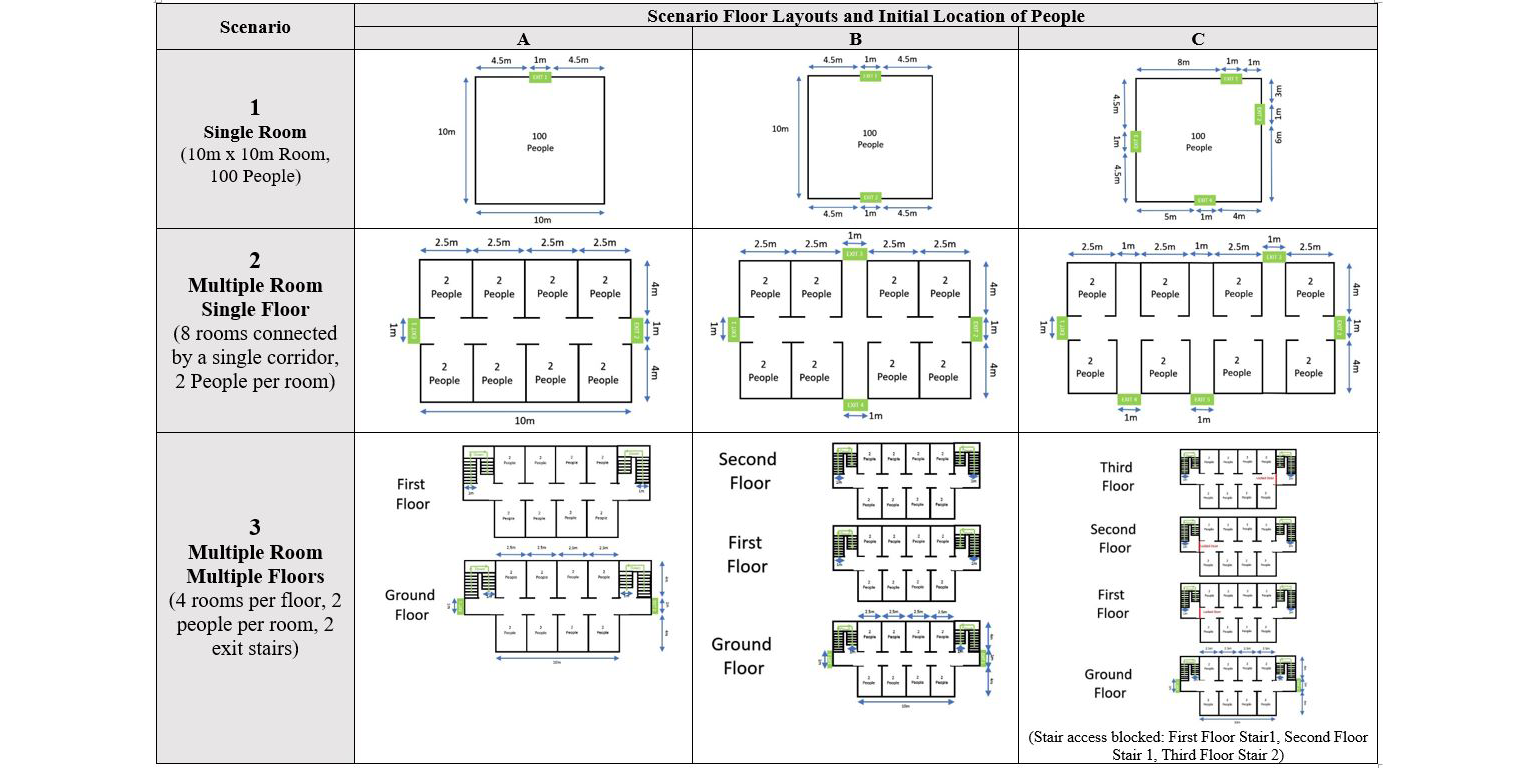Pilot Study of Mental Simulation of People Movement During Evacuations
DOI:
https://doi.org/10.17815/CD.2024.175Keywords:
Mental Simulation, People Movement, Evacuation, ModelingAbstract
Mental simulation of people movement forms a core component of pedestrian/evacuation analysis and planning, albeit one that is rarely addressed. It can be defined as the process by which a practitioner develops a narrative of how people within a built environment may move to inform a decision-making process regarding architectural or procedural design. There are a range of contexts in which a practitioner may use mental simulation. These can include assisting with identifying problems associated with architecture/procedural design and comparing with pedestrian/evacuation modelling results to suggest if these are in line with expectations.. Little research has been conducted exploring the process by which practitioners mentally simulate people movement, its efficacy, and what factors influence this process. This paper is intended to provide insights regarding this process. Results from an online survey are presented where expert practitioners where asked questions about a range of hypothetical evacuation scenarios with increasing complexity regarding what they expected the total evacuation time to be and how many people they expected to use each exit if they were simulated in a pedestrian/evacuation model. Participants were also asked how confident they were with their results. The survey data was then compared with results with evacuation model results of the same scenarios. Key findings from the study highlight that as the floor plan layout and behavioural complexity increase in a scenario, the greater the level of variation in responses between practitioners along with decreasing levels of accuracy and levels of confidence in their perceived ability for performing mental simulation of people movement. Floor plan and exit symmetry appear to influence a practitioner’s ability to mentally simulate people movement in terms of estimating evacuation times and exit usage when layouts/exit locations change.
References
Hurley, M.J., Gottuk, D., Hall, J.R., Harada, K., Kuligowski, E., Puchovsky, M., Torero, J., Watts, J.M., Wieczorek, C. (eds.): SFPE Handbook of Fire Protection Engineering. Springer, New York, NY (2016). doi:10.1007/978-1-4939-2565-0
De Groot, A.D.: Thought and Choice in Chess. Mouton Publishers, The Hague (1965)
Kahneman, D., Tversky, A.: The simulation heuristic. In: Daniel Kahneman Paul Slovic, A.T. (ed.) Judgment under Uncertainty: Heuristics and Biases. Cambridge University Press, Cambridge (1998)
Klein, G.A.: Sources of Power: How People Make Decisions. MIT Press (1999)
Bloom, B.S., Broder, L.J.: Problem-solving processes of college students. Supplementary Educational Monographs (1950)
Klein, G., Crandall, B.W.: The role of mental simulation in problem solving and decision making. In: Local Applications of the Ecological Approach to Human Machine Systems. CRC Press (1995)

Downloads
Published
How to Cite
Issue
Section
Categories
License
Copyright (c) 2024 Michael Kinsey, Steve Gwynne

This work is licensed under a Creative Commons Attribution 4.0 International License.
Authors contributing to Collective Dynamics agree to publish their articles under the Creative Commons Attribution 4.0 license.
This license allows:
Share — copy and redistribute the material in any medium or format
Adapt — remix, transform, and build upon the material
for any purpose, even commercially.
The licensor cannot revoke these freedoms as long as you follow the license terms.
Authors retain copyright of their work. They are permitted and encouraged to post items submitted to Collective Dynamics on personal or institutional websites and repositories, prior to and after publication (while providing the bibliographic details of that publication).








